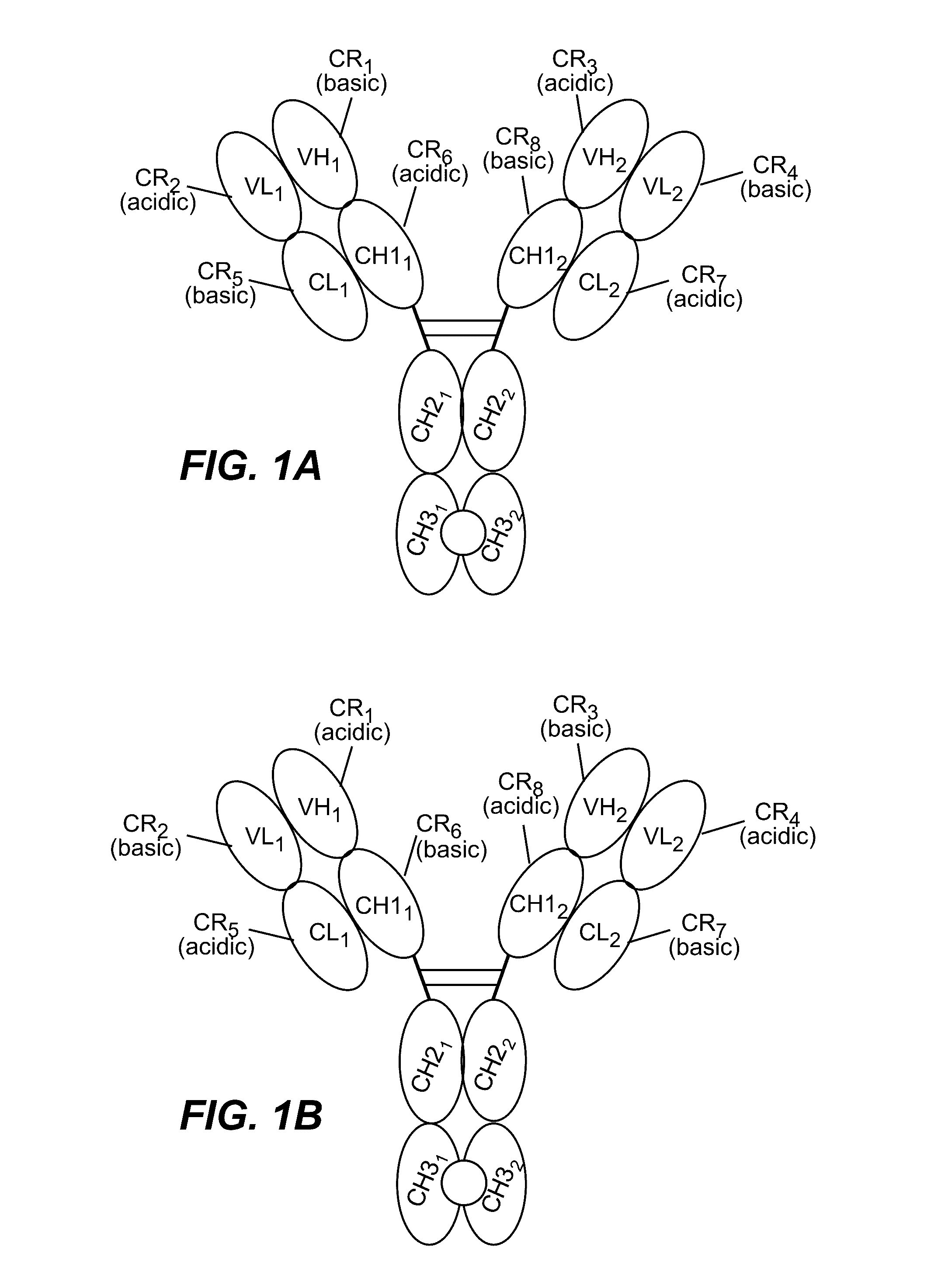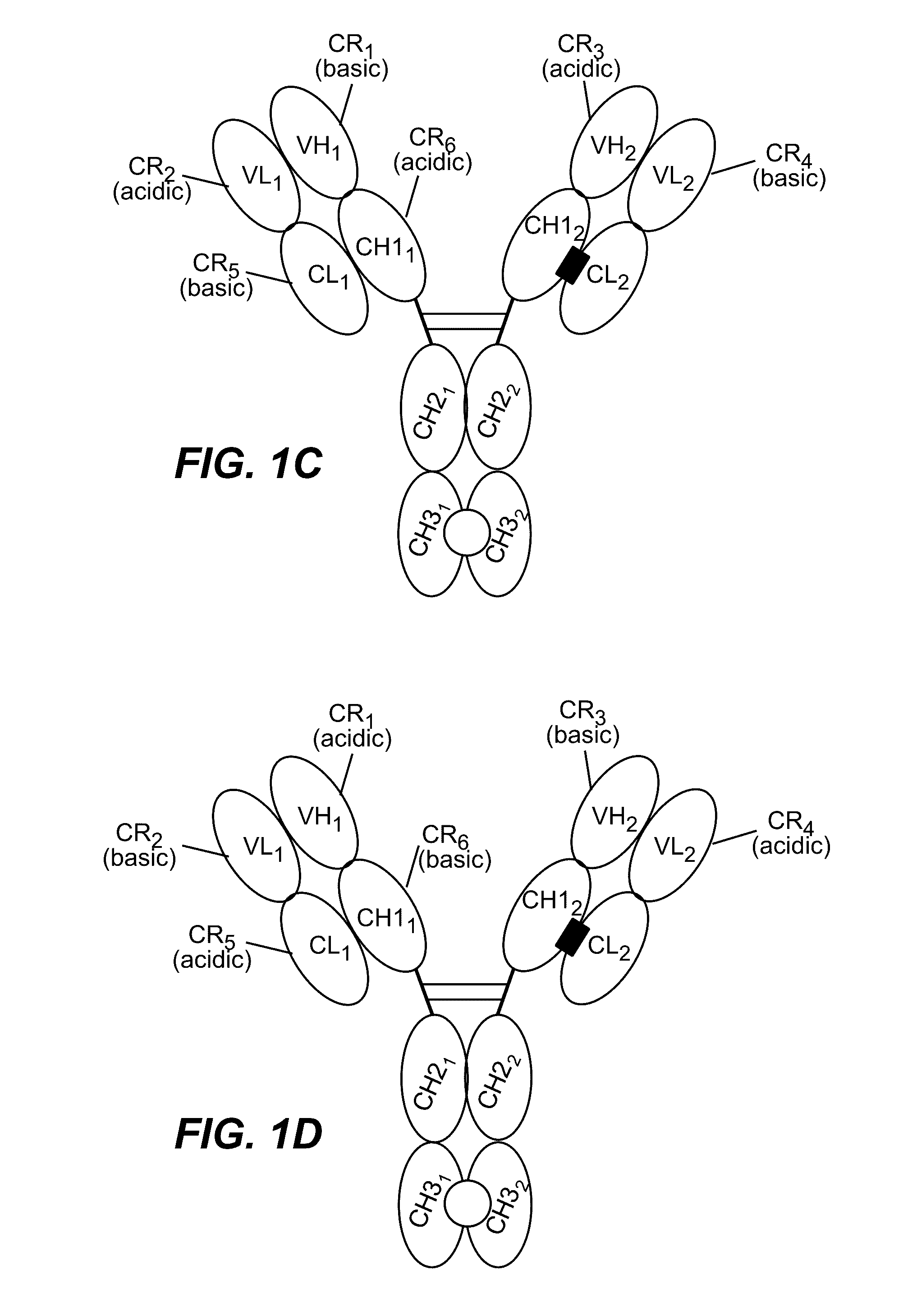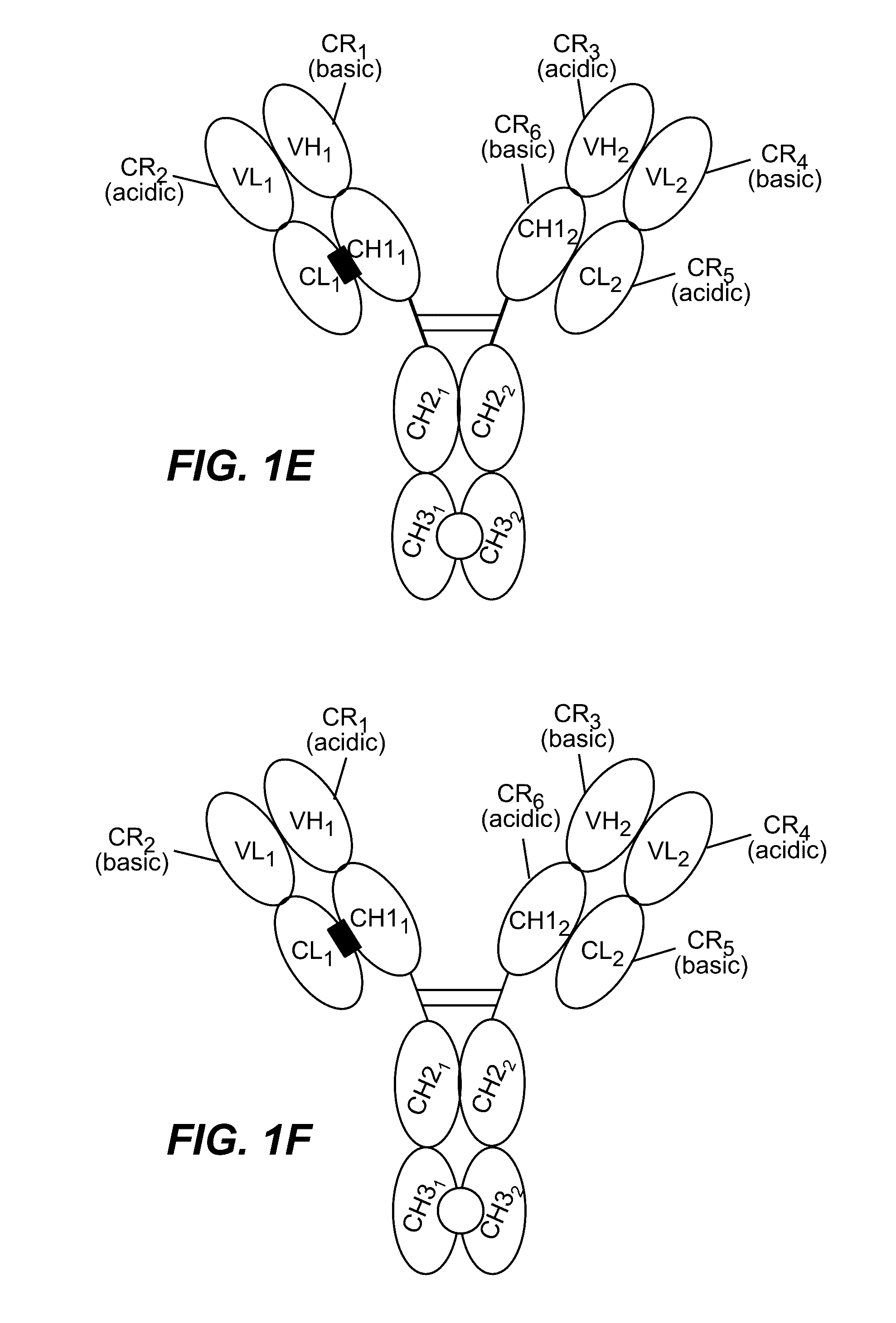HUMANIZED AND AFFINITY MATURED ANTIBODIES TO FcRH5 AND METHODS OF USE
- Summary
- Abstract
- Description
- Claims
- Application Information
AI Technical Summary
Benefits of technology
Problems solved by technology
Method used
Image
Examples
example 1
Generation of Anti-FcRH5 Antibodies
Immunizations and Screening
[0423]BALB / c mice (Charles River, Hollister, Calif.) were immunized with 2 μg, 10 μg, or 100 μg / injection per mouse. Antigens were suspended in monophosphoryl lipid A (MPL) / trehalose dicorynomycolate (TDM) (Ribi) adjuvant or Freund's adjuvant and injected into the footpad, peritoneum, or the base of the tail of each immunized animal. Mice received a total of 9 to 18 doses and 1 to 2 prefusion boosts in PBS alone via footpad, intraperitoneally (IP), and / or hock routes 2 to 4 days prior to fusion. Immunization Campaign A, described in U.S. Pub. No. 2015 / 0098900, produced the parental anti-FcRH5 antibody 1G7, which is optimized and further characterized herein.
[0424]A. Immunization Campaign B
[0425]To produce isoform-specific antibodies for the membrane-proximal Ig-domain of FcRH5, mice were immunized with E11 protein (amino acids 745-850 of SEQ ID NO: 114) with an N-terminal His-expression tag that was expressed in CHO cells...
example 2
Generation and Characterization of Anti-FcRH5 Antibody Variants from Immunization Campaigns a and C
[0435]A. Humanization of Anti-FcRH5 Monoclonal Antibodies from Immunization Campaign A
[0436]Anti-FcRH5 antibody 1G7 from Immunization Campaign A, described in U.S. Pub. No. 2015 / 0098900, was humanized by the HVR graft method as previously described (Presta et al. Cancer Res. 57:4593-4599, 1997), except that consensus VH4 and Vκ1 frameworks (Dennis, Current Trends in Monoclonal Ant. Develop. and Manufac. 9-28, 2010) were used as acceptor frameworks. The heavy chain graft also included murine residues at framework Kabat positions 37, 48, 67, 71, 73, 78, 93, and 94, and the light chain graft also included murine residues at framework positions 36 and 43 for proper HVR presentation and VH / VL domain contact. Residue numbers are according to Kabat et al. (Sequences of proteins of immunological interest, 5th Ed., Public Health Service, National Institutes of Health, Bethesda, Md., 1991). The ...
example 3
Generation and In Vitro Characterization of Exemplary FcRH5 TDBs
[0453]Anti-FcRH5 antibodies described herein were used to generate T cell-dependent bispecific (TDB) antibodies comprising the binding determinants of the anti-human FcRH5 on one arm and an anti-human CD3ε on the other arm. The FcRH5 binding determinants included the humanized and affinity matured monoclonal antibody clones 1G7, 1G7.v85, and 1G7.v87. The humanized binding determinants for anti-CD3ε included the high-affinity antibody clone 38E4.v1, the high-affinity clone 38E4.v11, and the low-affinity clone 40G5 (EC50 for hCD3ε=1.0 nM, 50 pM, and 13 nM, respectively). The anti-CD3 clones 38E4.v1, 38E4.v11, and 40G5c bind a human CD3ε polypeptide (a fragment of the human CD3ε polypeptide consisting of amino acids 1-26 or 1-27 (SEQ ID NO: 174)) and the amino acid residue Glu5 of CD3ε is not required for binding (see also PCT Pub. No. WO 2015 / 095392 and U.S. Pub. No. 2015-0166661, each of which is incorporated herein by r...
PUM
| Property | Measurement | Unit |
|---|---|---|
| Fraction | aaaaa | aaaaa |
| Molar density | aaaaa | aaaaa |
| Molar density | aaaaa | aaaaa |
Abstract
Description
Claims
Application Information
 Login to View More
Login to View More - R&D
- Intellectual Property
- Life Sciences
- Materials
- Tech Scout
- Unparalleled Data Quality
- Higher Quality Content
- 60% Fewer Hallucinations
Browse by: Latest US Patents, China's latest patents, Technical Efficacy Thesaurus, Application Domain, Technology Topic, Popular Technical Reports.
© 2025 PatSnap. All rights reserved.Legal|Privacy policy|Modern Slavery Act Transparency Statement|Sitemap|About US| Contact US: help@patsnap.com



